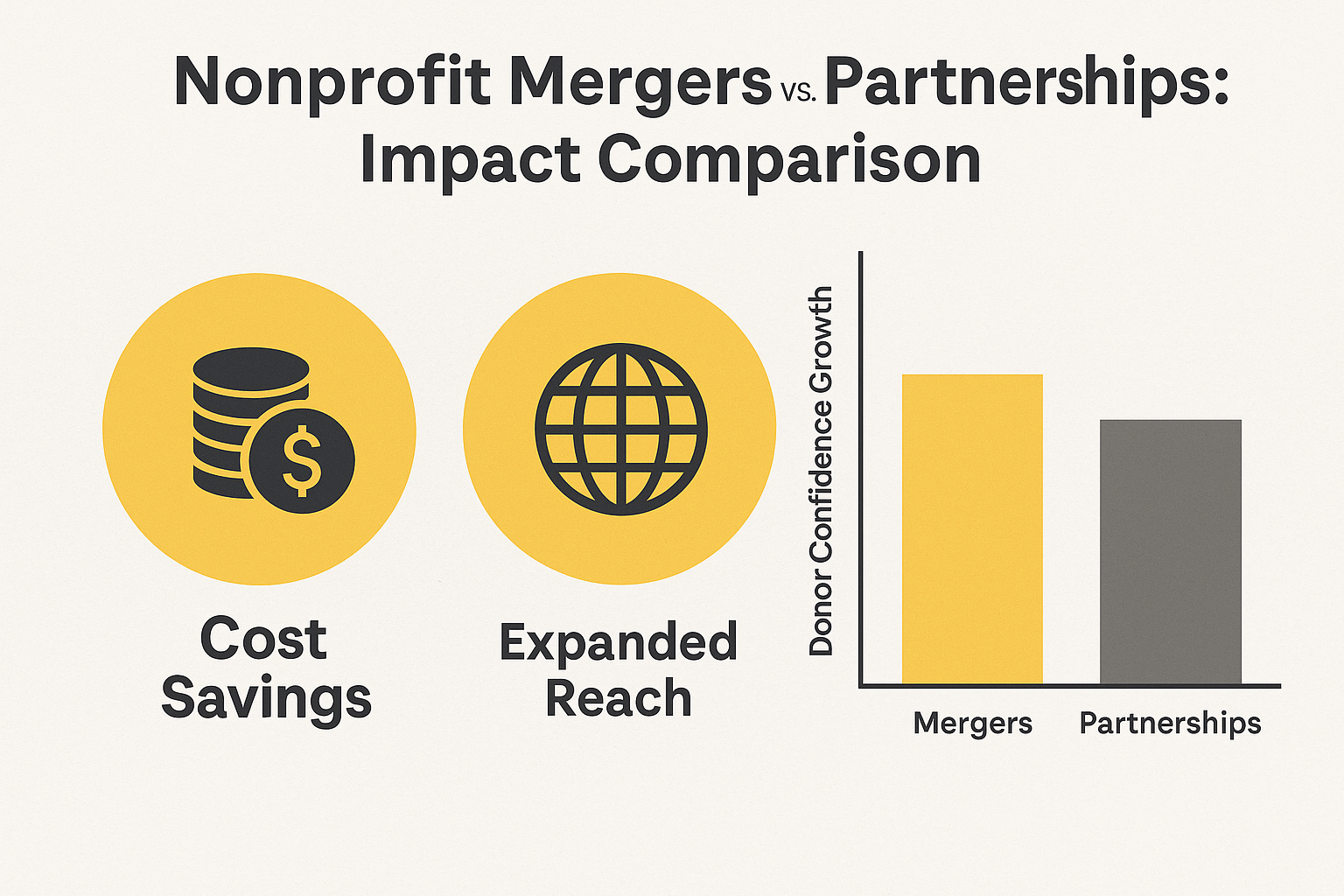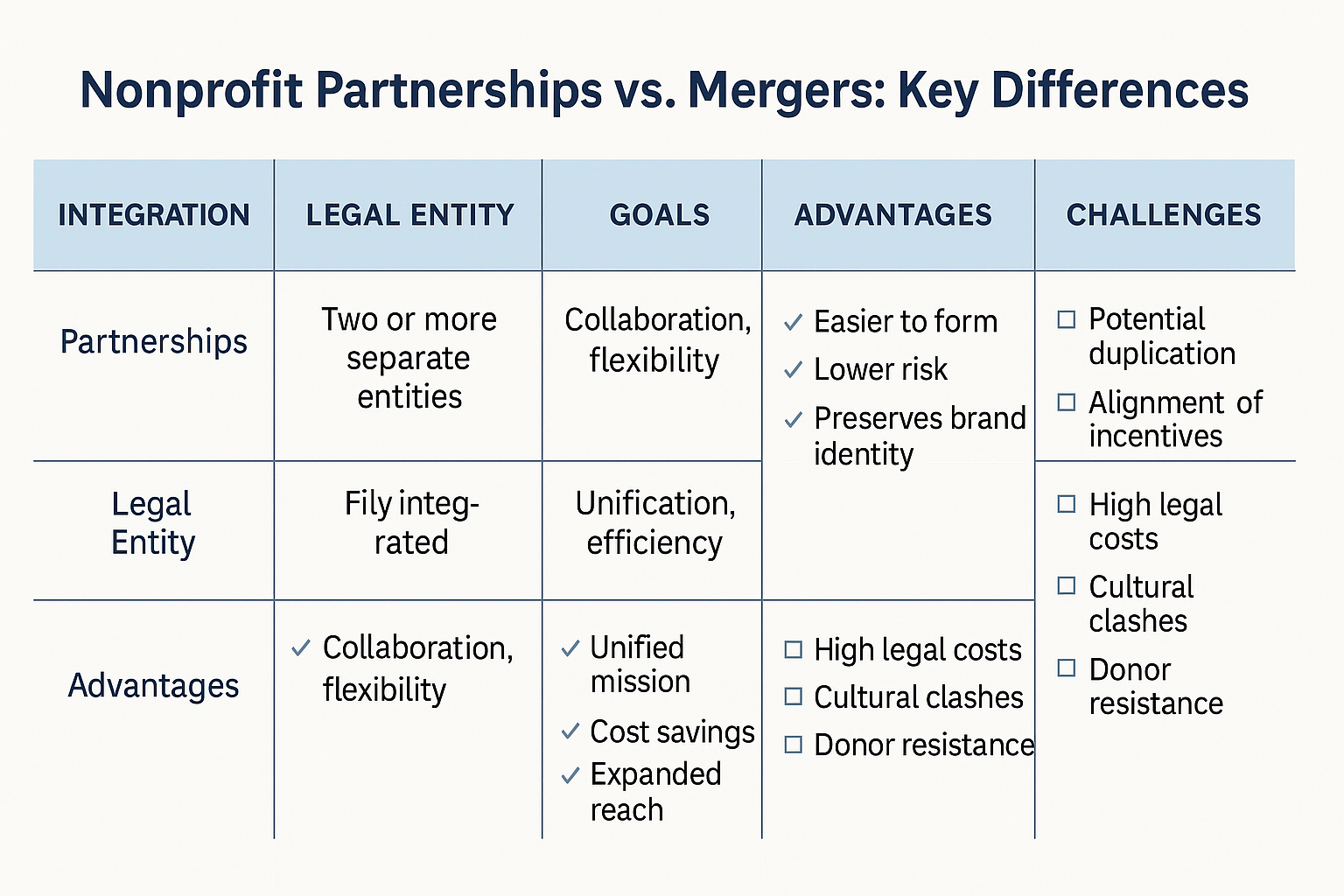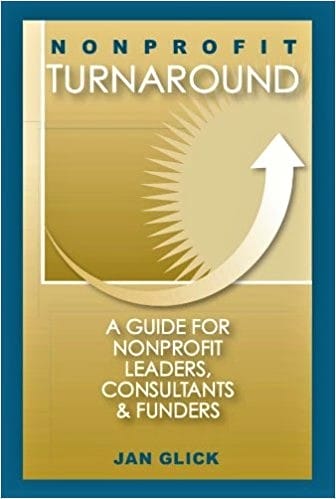In today’s nonprofit landscape, organizations face increasing pressure to do more with less—stretching limited resources while addressing ever-growing community needs. Two strategies often considered are nonprofit partnerships vs. mergers, both designed to increase efficiency, extend reach, and create greater impact. But which approach truly delivers the most value for nonprofits and healthcare organizations?
The answer isn’t simple. Partnerships allow flexibility and innovation while preserving independence, whereas mergers promise operational efficiency, sustainable growth, and long-term transformation. By examining the benefits, challenges, and decision-making frameworks for each, nonprofit leaders can determine the best collaboration strategy to maximize mission impact.
Table of Content
- The Core Difference: Integration vs. Independence
- Partnerships: The Power of Collaboration
- Mergers: The Power of Unification
- Comparing Nonprofit Mergers vs. Partnerships
- Nonprofit Collaboration Strategies: Best Practices
- Nonprofit Mergers vs. Acquisitions: A Distinction
- Which Strategy Creates Greater Impact?
- Conclusion: Mission First
- FAQ's
The Core Difference: Integration vs. Independence
Partnerships: The Power of Collaboration
Mergers: The Power of Unification
Comparing Nonprofit Mergers vs. Partnerships
Nonprofit Collaboration Strategies: Best Practices
Nonprofit Mergers vs. Acquisitions: A Distinction
The Core Difference: Integration vs. Independence
Partnerships (Collaborations, Alliances): Organizations remain legally independent but align efforts to achieve shared goals. Think of this as an “and” strategy (Org A and Org B working together).
Mergers (and Acquisitions): Two or more organizations become one legal entity. This is a “become” strategy (Org A and Org B become Org C).
Understanding this distinction is critical: partnerships maintain autonomy, while mergers integrate fully. Both have contexts where they shine.
Partnerships: The Power of Collaboration
When They Create Greater Impact
Leveraging Complementary Strengths – One organization brings program expertise, another offers wide distribution channels. Together, they can achieve outcomes neither could alone.
Geographic Expansion – Local nonprofits with community trust can scale by partnering with national organizations offering research and funding.
Advocacy and Influence – A coalition of nonprofits has more political weight and visibility than any single entity.
Pilot Testing New Ideas – Partnerships provide a low-risk way to test initiatives before committing to full integration.
Resource Sharing – Shared back-office functions, facilities, or staff free up funds for mission-critical work.
Advantages of Partnerships
Flexibility and speed in formation.
Lower risk than mergers—no legal or structural overhaul required.
Preservation of brand identity and donor relationships.
Challenges of Partnerships
Potential inefficiency due to duplication of effort.
Misaligned incentives around funding or recognition.
“Partnership fatigue” if collaboration isn’t actively managed.
Mergers: The Power of Unification
When They Create Greater Impact
Eliminating Redundant Services – Combines overlapping nonprofits into one streamlined, better-resourced organization.
Addressing Financial Crisis or Leadership Gaps – Stronger organizations can absorb weaker ones to preserve mission delivery and manage leadership transitions in nonprofits.
Creating Seamless Service Pathways – Fully integrated systems, staff, and programs make services more client-friendly.
Economies of Scale – Shared HR, IT, and finance functions reduce costs significantly.

Advantages of Mergers
Unified mission, board, and strategy.
Deeper integration for long-term sustainability.
Stronger donor confidence and financial foundation.
Challenges of Mergers
High legal and administrative costs.
Risk of cultural clash between organizations.
Potential donor resistance and staff turnover.
Comparing Nonprofit Mergers vs Partnerships
Here’s a framework to guide decision-making:
Question
Partnership
Merger
Primary Goal
Extend reach, add services, share costs
Transform operations, eliminate duplication, ensure survival
Cultural Fit
Aligned goals are sufficient
Deep cultural compatibility required
Urgency
No crisis, time to build gradually
Yes, urgent or unsustainable status quo
Stakeholder Support
Easier to gain buy-in
Requires extensive communication
Brand Identity
Important to preserve
Willing to unify under one identity

Nonprofit Collaboration Strategies: Best Practices
Whether pursuing a partnership or a merger, success depends on strategy:
Clarity of Purpose: Define shared goals upfront.
Transparent Communication: Keep boards, staff, and donors informed.
Cultural Assessment: Ensure values and working styles align.
Legal and Financial Preparation: Particularly critical for mergers.
Mission Alignment: The collaboration must strengthen—not dilute—the mission.
Nonprofit Mergers vs Acquisitions: A Distinction
While often used interchangeably, mergers and acquisitions differ:
Mergers: Two nonprofits combine as equals to form a new entity.
Acquisitions: One nonprofit absorbs another, typically when one is struggling financially or operationally.
Both fall under the umbrella of nonprofit consolidation but carry different implications for governance, branding, and culture.
Which Strategy Creates Greater Impact?
There is no universal answer. Partnerships amplify impact quickly, with flexibility and lower risk. Mergers create deeper, lasting transformation but involve higher stakes and complexity.
The best strategy is context-driven:
Use acquisitions to innovate, scale, and collaborate.
Use mergers to unify, streamline, and sustain.
Forward-thinking nonprofits often use both strategies over time, starting with collaborations that evolve into mergers if conditions align.
Conclusion: Mission First
The real question isn’t “Should we merge or partner?” but rather “Which strategy will maximize mission impact?”
Partnerships are powerful tools for extending reach and testing ideas.
Mergers deliver sustainable growth and long-term impact.
Both are critical pieces of the nonprofit collaboration spectrum.
By focusing on mission and community needs—not organizational ego—nonprofits and healthcare organizations can align mission, vision, and strategy to select the right path for creating lasting, positive change.
Want to Learn More About Nonprofit Partnerships vs. Mergers? Glick Davis & Associates Can Help.
Frequently Asked Questions
Partnerships allow nonprofits to remain independent while collaborating, whereas mergers integrate two organizations into one legal entity.
Nonprofit Turnaround: A Guide for Nonprofit Leaders, Consultants and Funders

